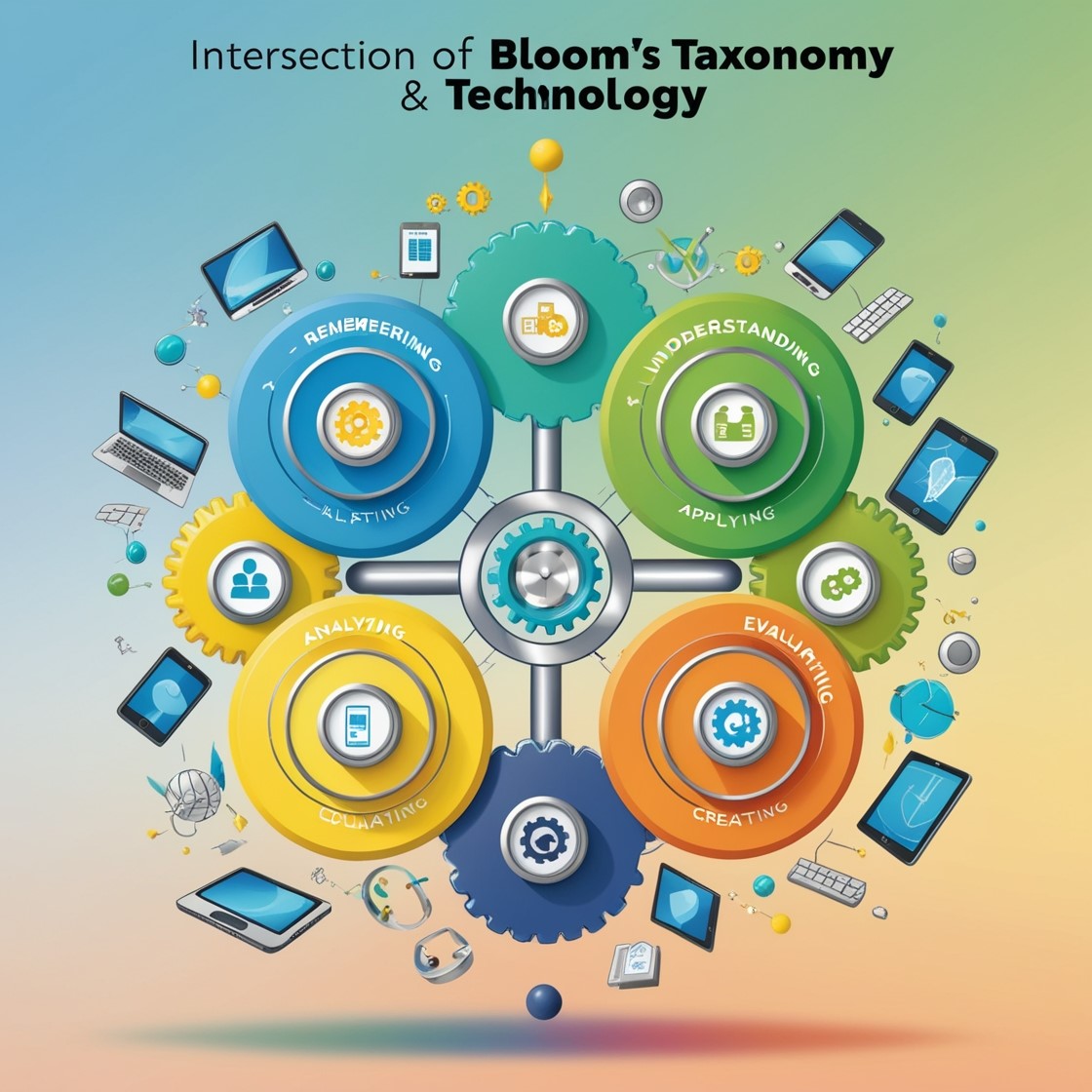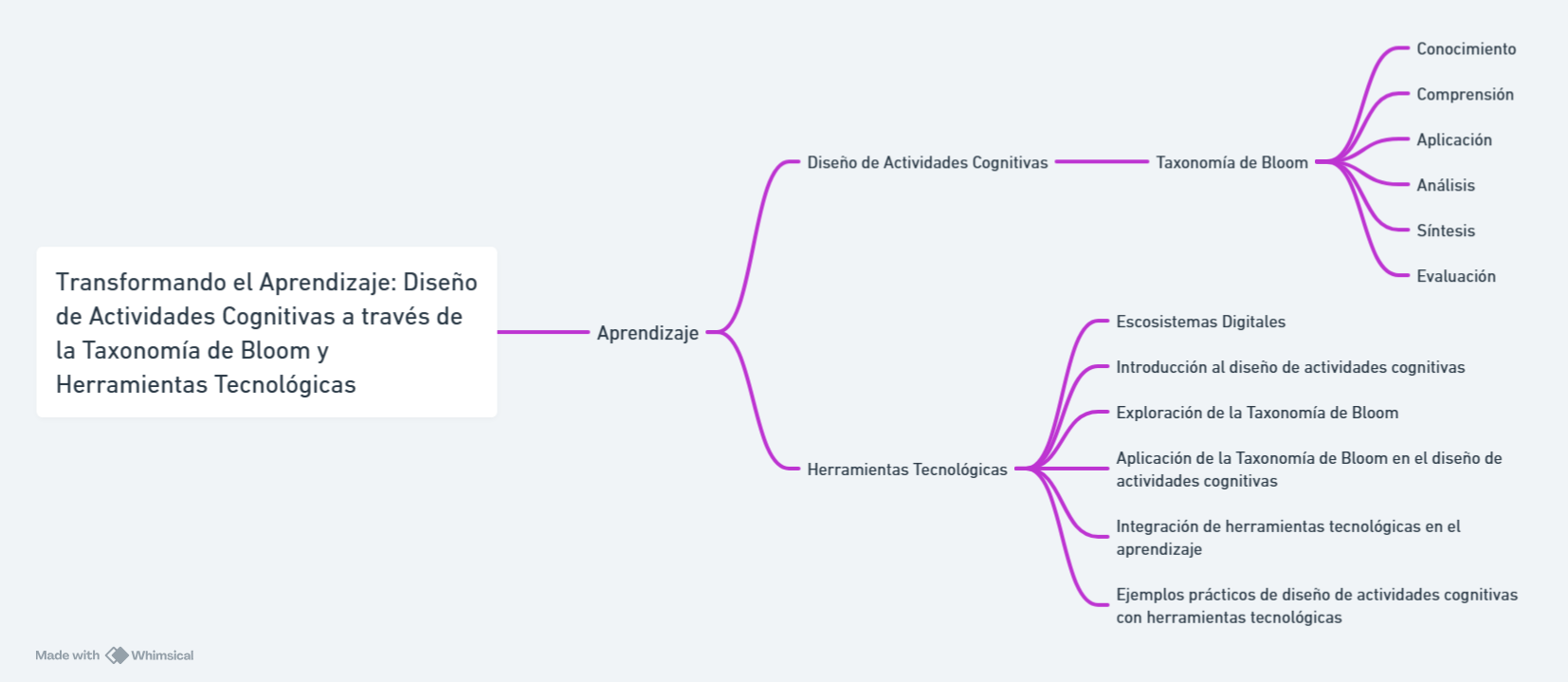Transforming Learning: Designing Cognitive Activities through Bloom’s Taxonomy and Technology Tools
Published 8 November 2024

Photo by: IA
The article explores how the design of cognitive activities based on Bloom’s Taxonomy, combined with technological tools, transforms learning. It sets clear and measurable objectives at each cognitive level, from basic comprehension to critical evaluation, encouraging dynamic learning aligned with desired competencies.
The design of cognitive activities through Bloom’s Taxonomy and the strategic use of technology tools is fundamental to transforming the learning process, where Bloom’s Taxonomy provides a clear framework for setting specific objectives at each cognitive level, from simple knowledge to critical evaluation where creation is at the pinnacle of educational activities. By using Bloom’s taxonomy, teachers can ensure that learning objectives are measurable/achievable and aligned with the micro-curriculum competencies they wish to develop in students through the lesson plan. This ensures that the activities designed have a clear purpose and contribute to the holistic development of the students.
At the knowledge level, activities can focus on the interpretation and understanding of key concepts, where the use of technological tools such as online quizzes, interactive games or simulations can help to reinforce learning in a more dynamic and attractive way, thus achieving the gamification of cognitive processes where the student is at the centre of the process and where the contents are arranged to generate a structural disruption in the way they are implemented as a result of the educational change of learning to learn.

For the comprehension level, activities can be designed to encourage interpretation and explanation of information. The use of online forums, virtual debates or the creation of multimedia presentations are effective tools to promote deep understanding of content.
At the application level, activities can focus on problem solving and practical application of the knowledge acquired. The use of tools such as virtual laboratories, simulators or real-time collaboration platforms allows students to put what they have learned into practice in an effective way and allows the foundations for lifelong learning to be integrated.

The analysis level can be addressed through activities that require breaking down information into its essential components and examining the relationships between them. Using data visualisation tools, comparative analysis or conducting case studies are useful for developing analytical skills in students.
At the synthesis level, activities can be designed that involve creating new products or ideas from existing information. The use of tools for the creation of multimedia content, blogs, or the elaboration of collaborative projects stimulates synthesis skills in students.
Finally, the assessment level can be addressed through activities that require critical judgements on information and the presentation of substantiated arguments. The use of tools for the creation of rubrics, checklists, structured debates or academic writing allows the development of evaluative skills in students.
In short, the design of cognitive activities through Bloom’s Taxonomy and the strategic use of technological tools makes it possible to establish clear and specific objectives at each cognitive level, ensuring that they are aligned with the desired competences and are measurable. This contributes to transforming the learning process, promoting comprehensive and meaningful development in students.




El artículo hace bisagra entre dos elementos fundamentales para la educación en pleno siglo XXI: de un lado, la importancia de reconocer el alcance de los objetivos (Taxonomía de Bloom), en el proceso de planificación, desarrollo y evaluación de los contenidos que serán materia de enseñanza del docente; de otro, la implementación de recursos tecnológicos en el diseño de actividades cognoscitivas para transformar el proceso de aprendizaje. Se trata, en este sentido, de romper progresivamente con los paradigmas de la enseñanza tradicional y a través de la integración de estos dos elementos proponer una innovación pedagógica más lúdica e interactiva.
Thanks.
I would like to have more recent bibliography on this taxonomy and AI.
Regards.